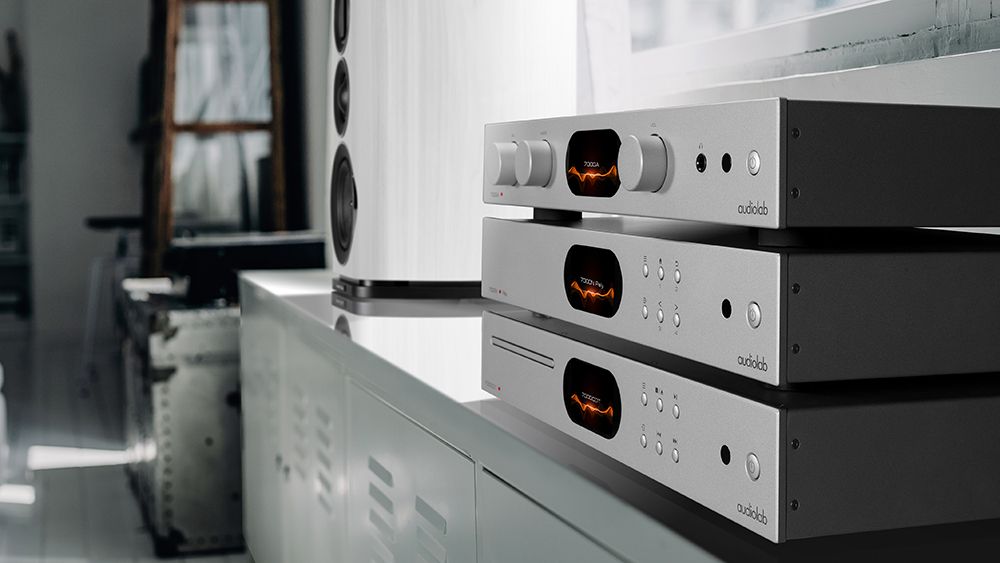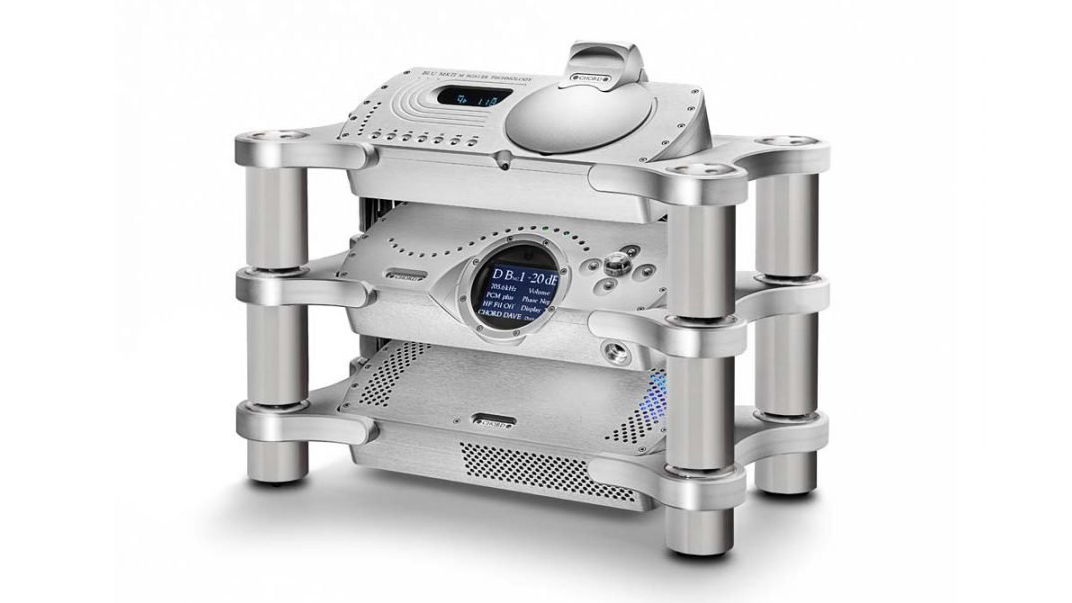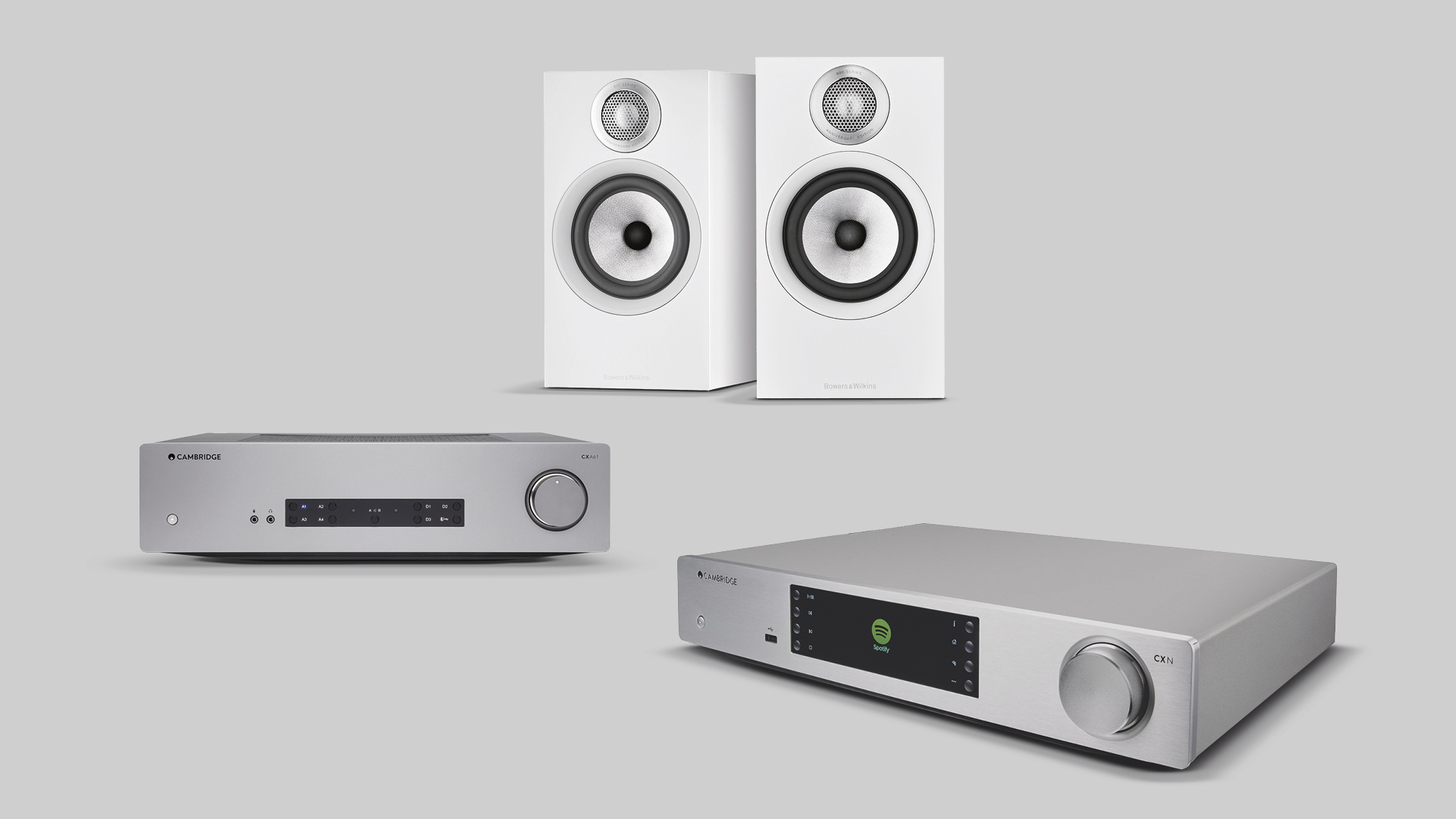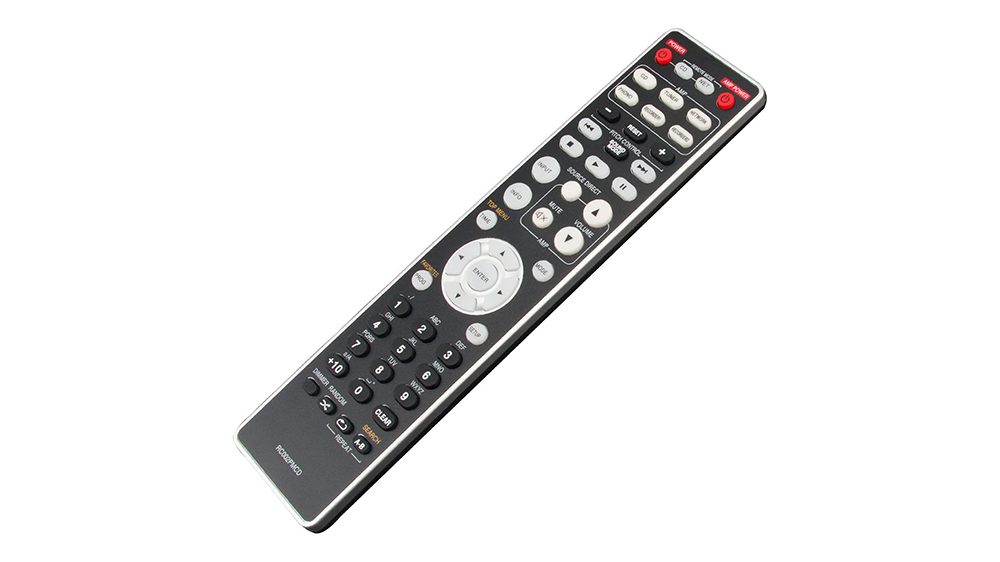Should you build a single-brand hi-fi system? The pros (and cons) of buying into one badge
Matching stack, or mix and match? That is the question

While old and new may blend wonderfully when it comes to renovated barn conversions and Lucy Dracus covering Carole King, it doesn’t always in the case of hi-fi system aesthetics. This writer should know – on their rack is an old-school, dial-heavy Marantz integrated sitting below a sleek, minimalist Cambridge Audio streamer – and, to make it worse, one’s silver and one’s black. The company badges don’t remotely line up. Visually, they are as compatible as wedding invitations and the Goosebumps font.
On the flip side, there are likely very few things more beautiful to the eye of a hi-fi enthusiast than a handsome rack of matching separates. Naim’s streamlined black-punched-with-illuminated-green, Salisbury heavy metal components spring to mind, as do the attractive tiers of blue glow that come from the marriage of multiple McIntosh electronics. You can probably picture those, but if the image of a Chord Electronics source stack is beyond your mental conjuring, just take a look at that beauty below and try not to drool. The uniformity an army lieutenant would be proud of.
But while aesthetics are important – more so to some people than others, naturally – and the most obvious advantage to keeping it in the family when it comes to building a system of separates, it shouldn’t be what first and foremost determines your system. There are other things to take into consideration, starting with component compatibility…

Strong sonic synergy
For one, there is the unquestionable appeal of 'designed with the same ears' engineering. More than one of our recommended separates systems contains two components (often a source feeding an amplifier) from the same brand and, more specifically, product line. It’s pretty sensible really, as engineers will settle on a sound and try to keep it consistent across a product range and perhaps even a whole catalogue. Products from the same line will be tuned together and, more than any other circumstance, be specifically designed to perform well together.
Essentially, a well-designed duo (or trio) of electronics from one brand will negate the need to find sonic synergy, which is perhaps the most crucial element of system matching. For the record, combining two or more components with the same kind of sonic character is usually a recipe for disaster, so it’s better to pair, say, a bright-sounding source with a warmish amp and speakers, enabling you to get a more 'liveable-with' sonic balance. Partner rich-sounding kit together and you’ll end up with a kind of sonic soup.
Complete electrical compatibility
Electrical compatibility used to be something you needed to pay great attention to when system building, though it’s much less of an issue nowadays as the majority of kit on the market is generally electrically compliant and tolerant of one another.
Nearly everything goes with nearly everything in the sense that they will work. You can use just about any source with any amplifier, and more or less any amp to drive any speakers. OK so amp/speaker matching isn’t quite as hands-off as that, but so long as the amp is at least as powerful as the speakers' minimum rated power, albeit not more powerful than the speakers’ maximum rated power, all should be well.
The latest hi-fi, home cinema and tech news, reviews, buying advice and deals, direct to your inbox.
Obviously, as with sonic affinity, electrical compatibility won’t be an issue if you stick with the same brand and line. Again, products in the same range have been designed to work together and will connect and feed power to or receive power from one another just fine.

One remote to rule them all
On practical grounds, there is one significant technical appeal – single-handset remote control. Having just one remote to power on your CD player and amplifier, for example, is neat and efficient. And means there’s one less thing to lose down the sofa.
You might have picked up a hi-fi component’s handset before and realised that a quarter of its buttons are dedicated to the control of another ‘matching’ component in the family – futile if you don’t own it, but handy if you do!
Benefit from proprietary technology and integration
It’s pretty niche, but some hi-fi manufacturers have proprietary technology that works only within their own products and is not brand-agnostic. For example, McIntosh has its digital MCT connector that allows its SACD player to connect to a compatible McIntosh preamplifier or integrated (via a specific McIntosh-designed cable) for the playback of SACD discs’ high-res audio in supposedly optimum sound quality.
And then, to aid system integration, Cyrus has its MC-Bus connections, allowing unified control of Cyrus products that are all connected this way. So, for example, if a DAC is connected to a Cyrus CD player and amplifier via MC-Bus, they can all power on/off together from the latter's buttons or remote, or the DAC could, say, be set to automatically switch on when the CD input is selected on the amp.
While such family-exclusive features are far less universal than one-remote-fits-all control, they can bring neat enhancements to a system's user experience.

BUT, is it the best you can get?
Obviously, sticking with one brand doesn’t leave you with much choice, as you’re likely going to pair components that are within one, or across two, ranges, likely giving you the choice between only a few boxes. Obviously, you can be limited by the brand not even having matching electronics in the first place! While all of the above may well apply, you might not be getting the best performance-per-pound quality you possibly could be, or the feature set that’s best for you, if you branched out and considered the wider hi-fi market. Like I said in the ‘sonic synergy’ section, more than one of our recommended separates systems contains two components (often a source feeding an amplifier) from the same brand (this five-star system comprising Cambridge Audio’s CXN V2 music streamer and its CXA61 amp, feeding Bowers & Wilkins speakers, is one great example). But most of them do not.
While it’s true that simply picking two What Hi-Fi? Award winners and hoping for the best doesn’t always result in sonic harmony, there are many instances when they do; when pairing the best-performing amplifier at a certain price point with the best-performing source at a certain price point does result in something sonically compatible. This makes sense really as few companies specialise in multiple categories to class-leading levels, even if their catalogues have everything from turntables to amplification.
As it is often the case, then, that something from brand X complements something from brand Y even better than the alternative from brand Y, this is where a spot of judicious mixing and matching can pay off. And if such a multi-brand system looks smarter than the black-meets-silver, new-meets-old mess that some amp and source pairs do, bonus!
The bottom line
Ultimately, if there is a component pairing from one brand that you’re tempted by, try them together at your local dealer, and then swap in their suggested alternatives to see if you prefer the delivery from a different combination. As is always the case, listening to kit yourself and either following advice from your dealer or following our tried-and-tested system recommendations will prove invaluable.
A single-brand system can offer the ultimate in sound and practicality, but only go down that route if it gives you exactly the sound you're after, and not because it all visually matches or can be driven from a single handset, appealing though those aspects may appear. Mixing and matching brands may require more effort than sticking with one brand, but in more cases than not it will deliver the best results.
MORE:
How to choose and set up speakers, stereo amplifiers and turntables
How to build the perfect hi-fi system, including system suggestions
We've built a fantastic premium hi-fi system that spins and streams superbly

Becky is a hi-fi, AV and technology journalist, formerly the Managing Editor at What Hi-Fi? and Editor of Australian Hi-Fi and Audio Esoterica magazines. With over twelve years of journalism experience in the hi-fi industry, she has reviewed all manner of audio gear, from budget amplifiers to high-end speakers, and particularly specialises in headphones and head-fi devices.
In her spare time, Becky can often be found running, watching Liverpool FC and horror movies, and hunting for gluten-free cake.
